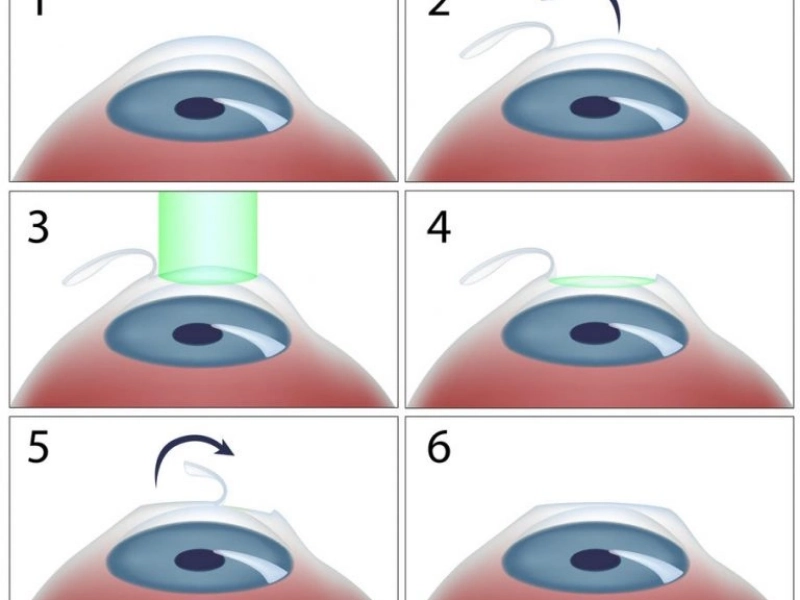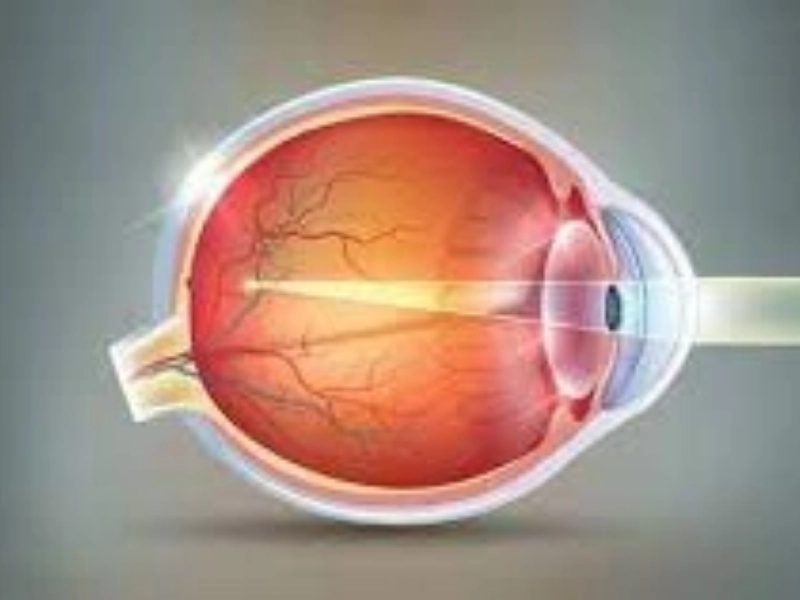Myopia, or severe nearsightedness, is the most prevalent refractive error. It distorts the perception of adjacent items, making distant objects appear clear. Through corneal reshaping, LASIK corrects astigmatism, hyperopia, and myopia (the clear front area of your eye). A tiny flap of tissue on the surface of your cornea will be folded back by your doctor.
 One frequent visual impairment that makes it difficult to view distant objects is myopia. It occurs when the cornea—the transparent outer layer of the eye—curvatures too much or when the eyeball grows too long. In order to see clearly, this causes the light that enters the eye to focus in front of the retina.
Myopics often have no trouble reading up close, but they must squint or move their head in order to see effectively at a distance. This raises the risk of major medical disorders, including glaucoma and retinal detachment, and can cause eye strain.
Myopia typically starts in childhood and progressively worsens. Contact lenses and spectacles are two options available to people who are myopic for vision correction. They can also get laser treatments like PRK or LASIK, which alter the cornea's structure to improve the eye's ability to concentrate on both close and distant things.
One frequent visual impairment that makes it difficult to view distant objects is myopia. It occurs when the cornea—the transparent outer layer of the eye—curvatures too much or when the eyeball grows too long. In order to see clearly, this causes the light that enters the eye to focus in front of the retina.
Myopics often have no trouble reading up close, but they must squint or move their head in order to see effectively at a distance. This raises the risk of major medical disorders, including glaucoma and retinal detachment, and can cause eye strain.
Myopia typically starts in childhood and progressively worsens. Contact lenses and spectacles are two options available to people who are myopic for vision correction. They can also get laser treatments like PRK or LASIK, which alter the cornea's structure to improve the eye's ability to concentrate on both close and distant things.
 The way LASIK surgery functions is by reshaping the cornea. Furthermore, it can adjust astigmatism. By cutting away tissue, a laser helps focus light onto the retina by shortening the eye. This lessens or eliminates the need for glasses or contact lenses while improving nearsighted vision.
Your eyes will be coated with an antibiotic ointment during the treatment to help them recuperate. At first, your vision can be a little fuzzy, but it should clear up quickly.
It's crucial to wait a few weeks before having LASIK surgery to use contacts. This is due to the fact that wearing contacts can cause your cornea to change shape and cause measurements to be off.
Your eyes are not well served by severe myopia, as it increases your risk of retinal detachment and other dangerous problems. For this reason, individuals with severe myopia are not advised to have LASIK. As an alternative, you ought to think about LASEK or PRK surgery. These methods are more effective in treating myopia.
The way LASIK surgery functions is by reshaping the cornea. Furthermore, it can adjust astigmatism. By cutting away tissue, a laser helps focus light onto the retina by shortening the eye. This lessens or eliminates the need for glasses or contact lenses while improving nearsighted vision.
Your eyes will be coated with an antibiotic ointment during the treatment to help them recuperate. At first, your vision can be a little fuzzy, but it should clear up quickly.
It's crucial to wait a few weeks before having LASIK surgery to use contacts. This is due to the fact that wearing contacts can cause your cornea to change shape and cause measurements to be off.
Your eyes are not well served by severe myopia, as it increases your risk of retinal detachment and other dangerous problems. For this reason, individuals with severe myopia are not advised to have LASIK. As an alternative, you ought to think about LASEK or PRK surgery. These methods are more effective in treating myopia.
 Nearsightedness can be permanently treated surgically using LASIK, which doesn't go away with time. It can also assist patients in lessening their reliance on contact lenses or glasses. A balanced diet and eye exercises are two other myopia remedies. These can aid in enhancing eyesight and strengthening weakened eye muscles.
Astigmatism and nearsightedness/farsightedness can both be corrected with LASIK. Severe myopia sufferers, however, would not benefit from the procedure and could experience more issues in the future.
Myopic patients are more likely to experience glare and halos after the surgery. In addition, they can lose their ability to see clearly and require time off from work to heal. In these situations, a surgeon can suggest laser-based PRK or LASEK procedures, which don't involve making a corneal flap. They could also employ a procedure known as phakic lens implants. A surgeon implants these silicone or plastic lenses into the eyes permanently.
Nearsightedness can be permanently treated surgically using LASIK, which doesn't go away with time. It can also assist patients in lessening their reliance on contact lenses or glasses. A balanced diet and eye exercises are two other myopia remedies. These can aid in enhancing eyesight and strengthening weakened eye muscles.
Astigmatism and nearsightedness/farsightedness can both be corrected with LASIK. Severe myopia sufferers, however, would not benefit from the procedure and could experience more issues in the future.
Myopic patients are more likely to experience glare and halos after the surgery. In addition, they can lose their ability to see clearly and require time off from work to heal. In these situations, a surgeon can suggest laser-based PRK or LASEK procedures, which don't involve making a corneal flap. They could also employ a procedure known as phakic lens implants. A surgeon implants these silicone or plastic lenses into the eyes permanently.
 By undergoing laser surgery to alter the structure of their cornea, people with myopia might lessen their dependency on corrective lenses, such as eyeglasses and contact lenses. Astigmatism and farsightedness are two more refractive abnormalities that can be helped by this treatment.
Since LASIK is a permanent surgical procedure, it won't deteriorate over time. It has the potential to enhance nearsighted vision to nearly normal levels or beyond. Additionally, it can help with presbyopia, a condition that worsens with age and makes it difficult to focus on up-close objects.
LASIK is not a perfect solution, though. It may still cause you to have fuzzy or unclear vision because it modifies the shape of your cornea. After the surgery, you can also experience glare, halos around lights, and double vision. Although these side effects may linger for a few days or weeks, they shouldn't cause you any long-term issues. It may be necessary to treat them with eye drops or another method.
By undergoing laser surgery to alter the structure of their cornea, people with myopia might lessen their dependency on corrective lenses, such as eyeglasses and contact lenses. Astigmatism and farsightedness are two more refractive abnormalities that can be helped by this treatment.
Since LASIK is a permanent surgical procedure, it won't deteriorate over time. It has the potential to enhance nearsighted vision to nearly normal levels or beyond. Additionally, it can help with presbyopia, a condition that worsens with age and makes it difficult to focus on up-close objects.
LASIK is not a perfect solution, though. It may still cause you to have fuzzy or unclear vision because it modifies the shape of your cornea. After the surgery, you can also experience glare, halos around lights, and double vision. Although these side effects may linger for a few days or weeks, they shouldn't cause you any long-term issues. It may be necessary to treat them with eye drops or another method.